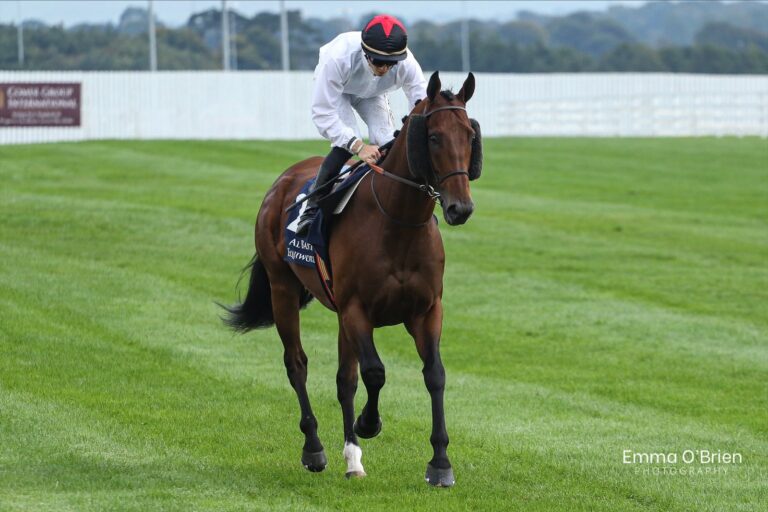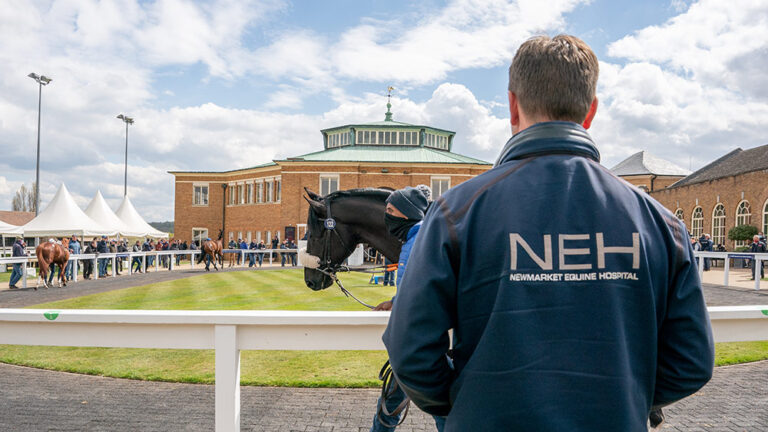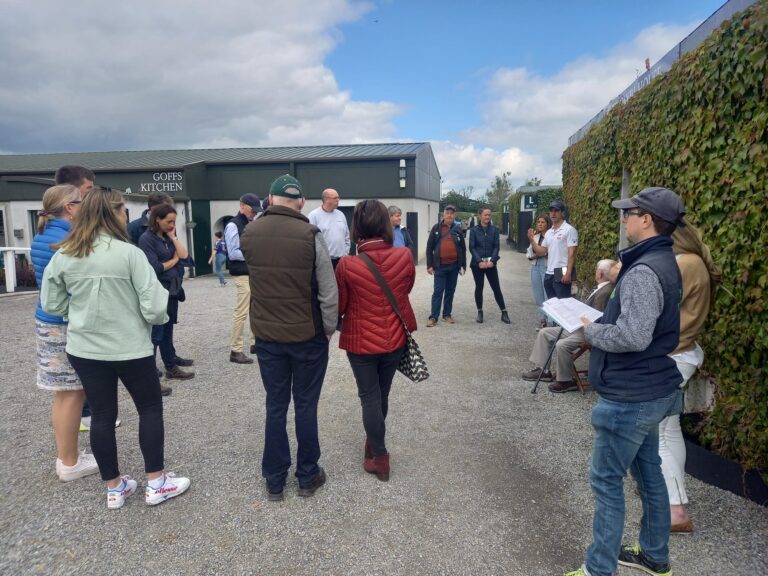At Syndicates.Racing, we watch the world of horse racing continuously evolving with new technologies and methodologies to enhance the selection and training of racehorses. One such innovation that has gained significant traction is stride analysis, particularly at breeze-up sales which we find very useful. Stride analysis offers valuable insights into a horse’s potential performance, making it an indispensable tool for trainers, owners, and syndicates like ours. Here’s a detailed guide on how to effectively use stride analysis at breeze-up sales.
Understanding Breeze-Up Sales
Breeze-up sales are unique events where young horses, typically two-year-olds, are showcased by running short, timed workouts, known as “breezes” usually over distances of two furlongs. These sales provide buyers with the opportunity to see the horses in action, allowing for an assessment of their speed, movement, and overall athleticism before making a purchase. Stride analysis can significantly enhance this evaluation process, here’s how we do it.
What is Stride Analysis?
Stride analysis involves measuring and evaluating various aspects of a horse’s stride, including stride length, stride frequency, and the time each hoof spends on the ground (stance time) versus in the air (swing time). Advanced technologies, such as high-speed cameras and motion sensors, are used to capture and analyze these parameters.
Benefits of Stride Analysis
1. Predicting Performance Potential:
• Stride analysis can help identify horses with efficient and effective strides, which are often correlated with better racing performance. Horses with longer, more powerful strides tend to cover more ground with less effort, making them potentially faster and more competitive.
2. Identifying Physical Issues:
• By closely examining stride patterns, potential buyers can detect subtle lameness or gait irregularities that may indicate underlying physical issues. Early identification of these problems can prevent future disappointments and costly veterinary bills.
3. Comparing Horses:
• Stride analysis provides objective data that can be used to compare different horses at the breeze-up sales. This quantitative approach supplements subjective visual assessments, helping buyers make more informed decisions.
How to Conduct Stride Analysis
1. Capture High-Quality Video:
• Buyers use high-speed cameras to record the horse’s breeze from multiple angles. Ensure the footage is clear and captures the entire stride cycle.
2. Use Motion Sensors:
• While not possible at sales, sometimes trainers attach motion sensors to the horse’s limbs to gather detailed data on stride length, frequency, and stance/swing times. These sensors provide precise measurements that are difficult to obtain from video alone.
3. Analyze the Data:
• We utilize specialized software to process the video and sensor data. The software will break down the stride into its components, allowing for detailed analysis of each phase of the stride cycle.
4. Interpret the Results:
• We look for horses with long, even strides and minimal ground contact time. These characteristics are often associated with greater speed and efficiency. Pay attention to any asymmetries or irregularities, as these may indicate potential issues.
5. Consult with Experts:
• If you’re new to stride analysis, consider consulting with equine biomechanics experts or veterinarians. Their expertise can help interpret the data and provide valuable insights into the horse’s potential.
Integrating Stride Analysis into Your Buying Strategy
1. Combine with Traditional Assessments:
• While stride analysis is a powerful tool, it should be used in conjunction with traditional evaluation methods, such as pedigree analysis, conformation assessment, and the horse’s overall demeanor and behavior. We never just use one metric to buy a horse.
2. Focus on Your Goals:
• Tailor your stride analysis criteria to your specific racing goals. For example, if you’re looking for a sprinter, prioritize stride frequency and acceleration. For longer distance races, emphasize stride length and efficiency.
3. Build a Comprehensive Profile:
• Use stride analysis to build a comprehensive profile of each horse. Combine this data with other factors, such as the horse’s training history and physical condition, to make a well-rounded, informed purchasing decision.
Conclusion
Stride analysis at breeze-up sales offers a cutting-edge approach to evaluating young racehorses. It’s something we are increasingly using to find an edge at Syndicates.Racing. By incorporating this technology into your selection process, you can gain deeper insights into a horse’s potential, identify any physical issues early on, and make more informed, data-driven decisions. As with any tool, the key to success lies in combining stride analysis with traditional assessment methods and expert consultation to build a comprehensive understanding of each horse’s capabilities and potential. Embrace the power of stride analysis and take your racehorse selection to the next level.

Evaluating a racehorse’s conformation is a critical skill that can significantly impact your success in the racing industry. At Syndicates.Racing, we prioritize this aspect to

At Syndicates.Racing, we understand that the key to a successful racehorse investment starts with a thorough pre-purchase veterinary exam. This crucial step helps us ensure

At Syndicates.Racing, understanding the pedigree of a racehorse is essential to making informed investment decisions. A pedigree page provides valuable insights into a horse’s lineage,

Ensuring the welfare of your racehorse is paramount to their health and performance at Syndicates.Racing. Here are some best practices to follow that you can

We love buying yearlings at Syndicates.Racing. Buying a yearling can be a rewarding investment, but it requires careful consideration and knowledge. Here are some key